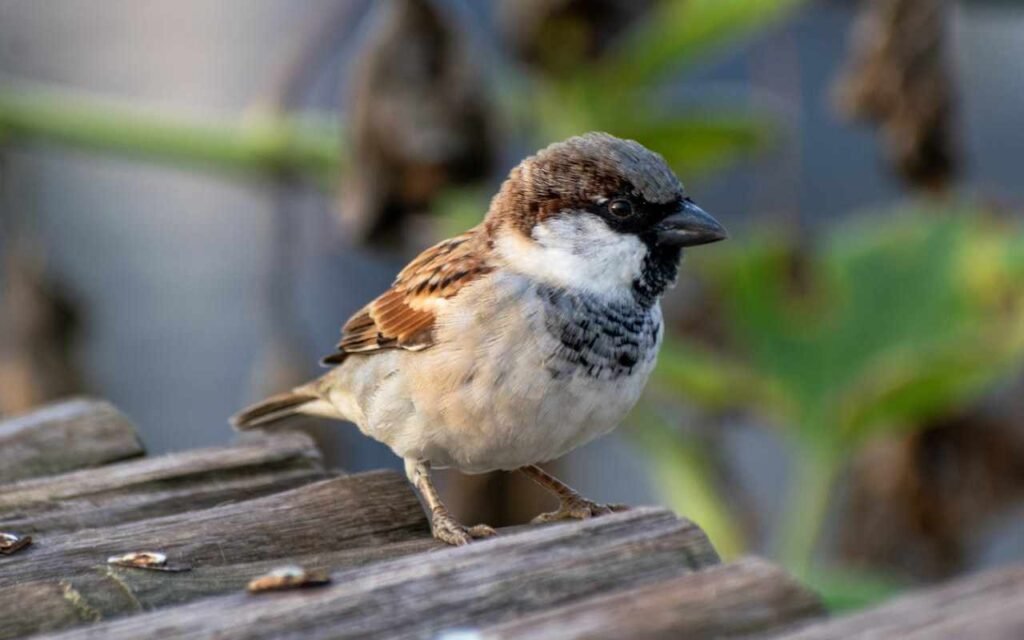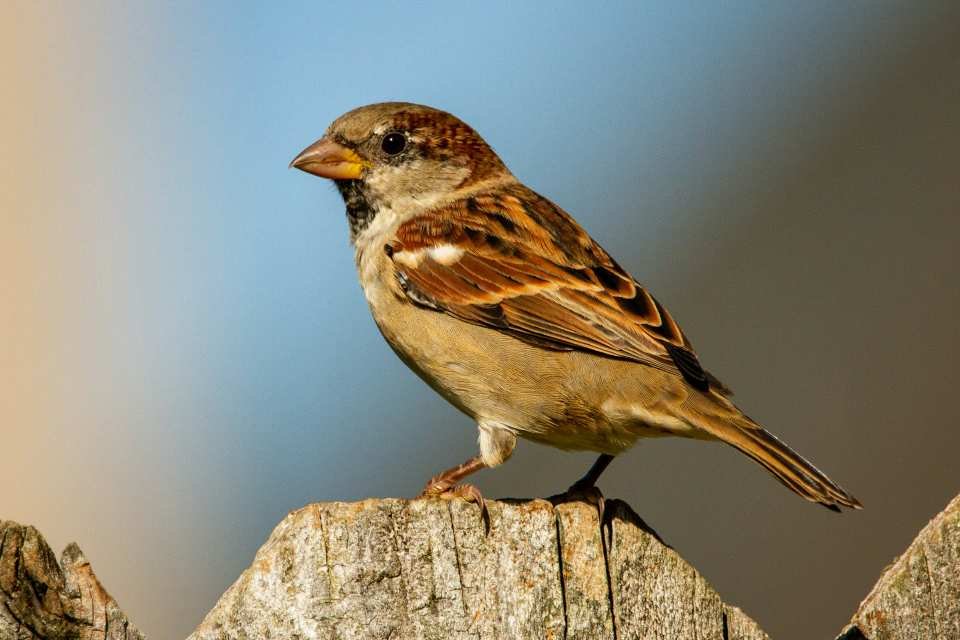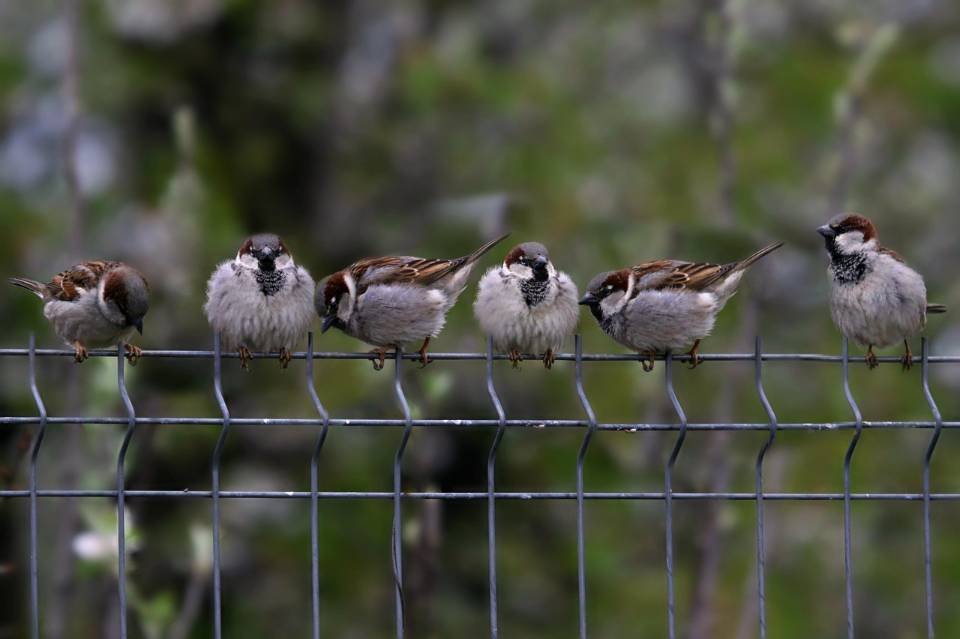You know that little brown bird that hangs around your porch, begging for breadcrumbs like some feathered panhandler? 🙂 Yeah, that’s the house sparrow, and trust me, there’s way more to these guys than meets the eye. If you’ve ever been curious about house sparrow habits, you’re in the right place. I’ve been watching these chirpy little characters for years, and honestly, they’re some of the most fascinating backyard birds you’ll ever encounter.
Last spring, I watched a pair build their nest in my neighbor’s gutter, and let me tell you, it was like watching a tiny construction crew in action. These birds have survival skills that would make Bear Grylls jealous, and their social dynamics are more complex than your average soap opera.
Understanding House Sparrow Behavior
Social Structure and Flocking Patterns
House sparrows are the ultimate social butterflies of the bird world. I’ve noticed they rarely travel alone, and there’s a good reason for that. These birds operate in tight-knit flocks that can range from a handful to hundreds of individuals, depending on the season and food availability.
Their flocking behavior serves multiple purposes. First, there’s safety in numbers. When you’re a small bird in a world full of cats, hawks, and other predators, having extra eyes watching for danger is pretty smart. I’ve seen entire flocks scatter in perfect synchronization when a neighborhood cat makes an appearance.
According to a study on house sparrow time budgets, individual sparrows spend less time scanning for predators when they are in larger flocks, which allows them to spend more time foraging without losing overall vigilance.
The social hierarchy within these flocks is absolutely fascinating. Dominant males establish their status through displays and occasional scruffles, while females often choose their mates based on these social standings. Ever wonder why some sparrows seem bolder than others at your bird feeder? That’s probably your local alpha sparrow showing off.
Communication and Vocalizations
These birds are chatty little things, and their vocalizations serve different purposes throughout the day. Their classic “cheep-cheep” isn’t just random noise. Male house sparrows use specific chirping patterns to attract mates, warn of danger, and establish territory.
I’ve learned to recognize the difference between their alarm calls and their casual conversation. When a hawk flies overhead, the entire flock erupts in sharp, urgent chirps that sound nothing like their relaxed feeding chatter.
According to a study on house sparrows, these distinct vocalizations warn nearby birds and increase flock survival rates. It’s like having a built-in neighborhood watch system.
The really cool part? Young sparrows actually learn their songs from older birds, much like human children learn language. I’ve watched parent sparrows teaching their fledglings, and it’s surprisingly touching to see this knowledge passed down through generations.
House Sparrow Diet and Feeding Habits
Natural Food Preferences
Here’s where things get interesting. Despite what you might think from watching them devour your sandwich crumbs, house sparrows are actually quite selective eaters in the wild. Their natural diet consists primarily of seeds, grains, and insects, with preferences that change seasonally.
During breeding season, these birds become protein hunters. They need extra nutrition for egg production and feeding their young, so they’ll actively search for caterpillars, beetles, and other small insects.
According to Klvaňová et al., 2012, nestling house sparrows are fed almost exclusively invertebrates during the first few days of life, gradually shifting to a more seed-based diet as they grow. I’ve watched sparrows methodically picking aphids off my rose bushes, and honestly, I appreciate the free pest control 🙂
Seeds from grasses and weeds make up the bulk of their diet during fall and winter. They’re particularly fond of dandelion seeds, which explains why they’re often seen hopping around lawns that homeowners consider “imperfect.” One bird’s weed is another bird’s five-star dining experience, right?
Urban Feeding Adaptations
Living in cities has made house sparrows incredibly opportunistic feeders. They’ve adapted to human food sources in ways that would make any survival expert proud. I’ve seen them figure out how to open discarded fast-food containers and even learned to recognize the sound of chip bags being opened.
But here’s the thing about feeding them human food – it’s not always the best idea. According to BirdWatching Daily, bread offers little nutritional value to sparrows and should be fed sparingly.
While they can handle small amounts of bread or crackers, their digestive systems work best with natural food sources. If you want to help local sparrows, consider offering nyjer seeds, millet, or cracked corn instead of processed foods.
Their foraging behavior is equally impressive. These birds will scratch through leaf litter, pick insects off tree bark, and even catch flying insects mid-air when the opportunity presents itself. They’re like tiny feathered ninjas when it comes to finding food.
Nesting Habits and Reproductive Behavior
Nest Site Selection
House sparrows are cavity nesters, which means they prefer enclosed spaces for raising their families. They’re not picky about real estate – I’ve found their nests in everything from tree holes to traffic lights to the eaves of houses. They’re basically the “anywhere will do” homeowners of the bird world. According to All About Birds, house sparrows are one of the most adaptable cavity nesters, thriving in both natural and artificial sites.
For readers interested in attracting sparrows themselves, check out How to Encourage Birds to Nest in Your Garden – practical advice for creating bird-friendly nesting spots.
Urban nesting sites include some pretty creative locations. I once discovered a sparrow family living inside a broken streetlight, and another pair had set up shop in a old mailbox that hadn’t been used in years. These birds are masters of making the most of what’s available.
The nest construction process is fascinating to watch. Both males and females participate, though the female typically does most of the interior decorating. They’ll gather twigs, grass, feathers, and any soft materials they can find. I’ve seen sparrows pulling stuffing from outdoor furniture cushions – apparently, they appreciate comfort as much as we do.
Breeding Patterns and Parental Care
House sparrows are prolific breeders, capable of producing multiple broods per year in favorable conditions. Their breeding season typically runs from early spring through late summer, with peak activity occurring during warmer months.
The courtship display of male sparrows is quite entertaining. They’ll hop around potential mates with their wings drooped and tails fanned, chirping enthusiastically. It’s like watching a tiny bird version of a dance competition, complete with all the dramatic flair you’d expect.
Once paired, sparrows are dedicated parents. The female typically lays 3-5 eggs, which she’ll incubate for about two weeks. Both parents work tirelessly to feed their nestlings, making hundreds of trips per day to collect insects and other protein-rich foods. I’ve watched exhausted sparrow parents working from dawn to dusk – it makes human parenting look like a part-time job.
Seasonal Nesting Behaviors
Spring nesting is when you’ll see the most activity. Males become territorial and will aggressively defend their chosen nest sites from competitors. I’ve witnessed some pretty intense sparrow showdowns over prime real estate locations.
During summer months, many pairs will attempt second or even third broods. This explains why you might see sparrow families with young birds of different ages – they’re literally raising multiple generations simultaneously.
Winter roosting behavior is completely different. Instead of individual nests, sparrows will crowd together in communal roosts for warmth. I’ve found groups of 20 or more birds squeezed into single nest boxes during particularly cold nights. Talk about maximizing efficiency!
Creating Sparrow-Friendly Environments
Landscaping for House Sparrows
If you want to attract these charming birds to your yard, creating the right environment is key. House sparrows prefer mixed habitats that offer both open areas for foraging and sheltered spots for nesting and roosting.
Native plants are your best bet for providing natural food sources. Grasses that produce seeds, berry-producing shrubs, and plants that attract insects will all help support local sparrow populations. I’ve had great success with sunflowers, which provide both seeds and attract the insects sparrows love to eat.
Dense shrubs or hedgerows offer protection and nesting opportunities. Sparrows feel safer when they have quick escape routes from predators, so providing thick vegetation near feeding areas is essential. My privet hedge has become sparrow central – I can always count on seeing activity there throughout the day.
Providing Food and Water
Setting up feeding stations doesn’t have to be complicated. Simple platform feeders or even scattering seeds on the ground will attract sparrows. They prefer to feed at ground level or on low platforms rather than hanging feeders.
Fresh water is just as important as food, especially during hot summer months or winter freezes. A simple birdbath or even a shallow dish will work. According to the Audubon Society, regular cleaning and refilling of birdbaths prevents the spread of disease and encourages consistent visits from local sparrows.
For detailed, chemical-free cleaning tips, check out How to Clean a Bird Bath Without Chemicals – this ensures your water sources stay safe and inviting. I keep mine clean and refilled regularly – you’d be amazed how quickly it becomes the neighborhood gathering spot.
Remember to keep feeders and water sources clean and well-maintained. Dirty feeding areas can spread diseases among bird populations, and nobody wants to be responsible for making their feathered friends sick. For advice on feeding sparrows and other birds during colder months, see Feeding Birds in Winter.
Quick Tips for House Sparrows
- Feed naturally: Offer seeds like nyjer, millet, or cracked corn instead of bread.
- Provide fresh water: Keep birdbaths clean and refilled regularly.
- Create shelter: Plant dense shrubs or hedges for nesting and roosting.
- Encourage nesting: Use safe nesting boxes or natural cavities.
- Observe safely: Give them space during breeding season to reduce stress.
Conclusion
House sparrows might seem like ordinary backyard birds, but they’re actually remarkable creatures with complex social lives and impressive survival skills. From their intricate flocking behaviors to their resourceful nesting habits, these birds have mastered the art of urban living better than most species.
Understanding their natural behaviors and dietary needs helps us appreciate these common birds in a whole new way. Whether you’re trying to create a sparrow-friendly garden or just want to better understand the birds outside your window, recognizing their habits and needs makes every backyard birdwatching session more rewarding. For more tips on observing birds in your yard, see Spring Birdwatching Tips for Beginners.
IMO, house sparrows prove that you don’t need exotic plumage or rare status to be fascinating – sometimes the most interesting stories come from the birds we see every day. Next time you spot that little brown bird hopping around your yard, take a moment to appreciate the complex life happening right in your backyard.




